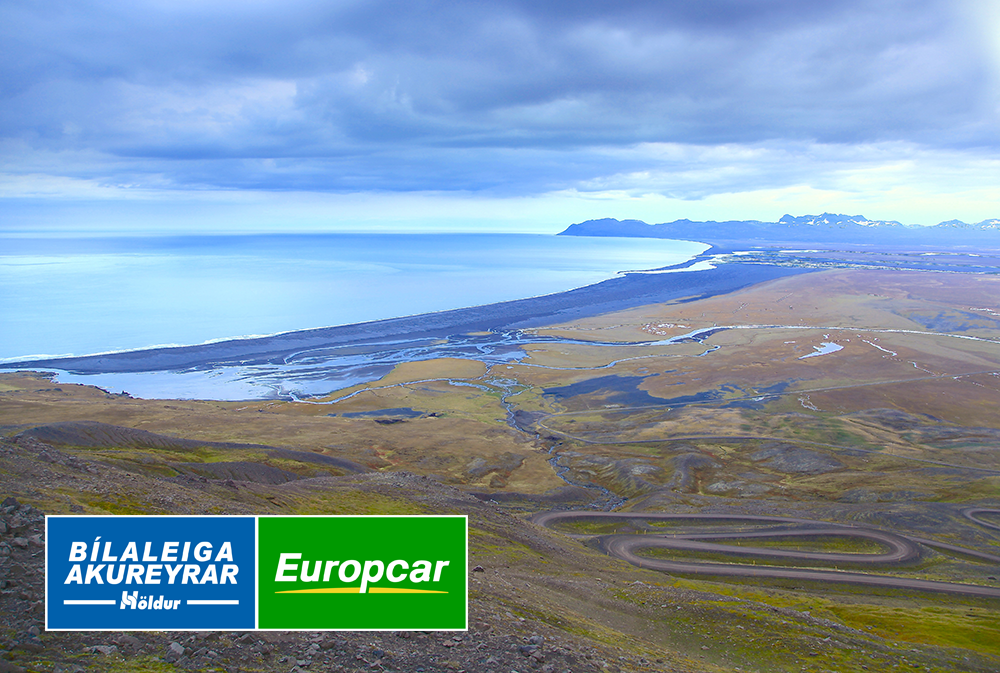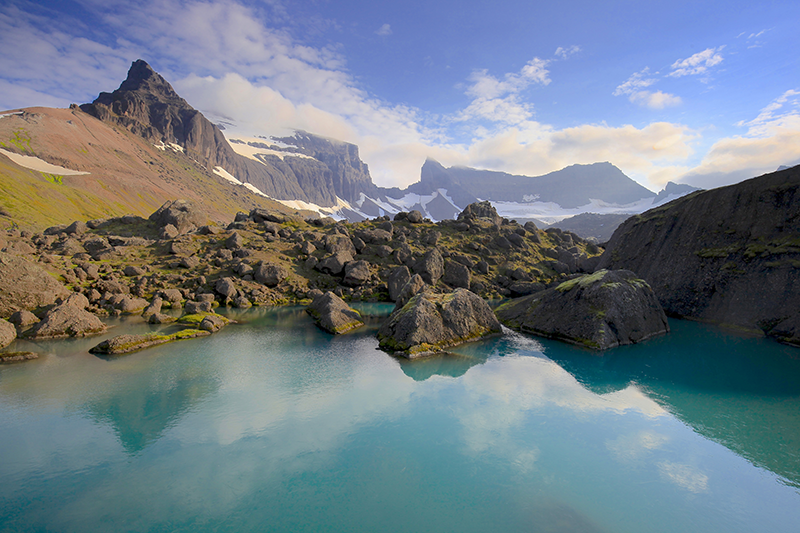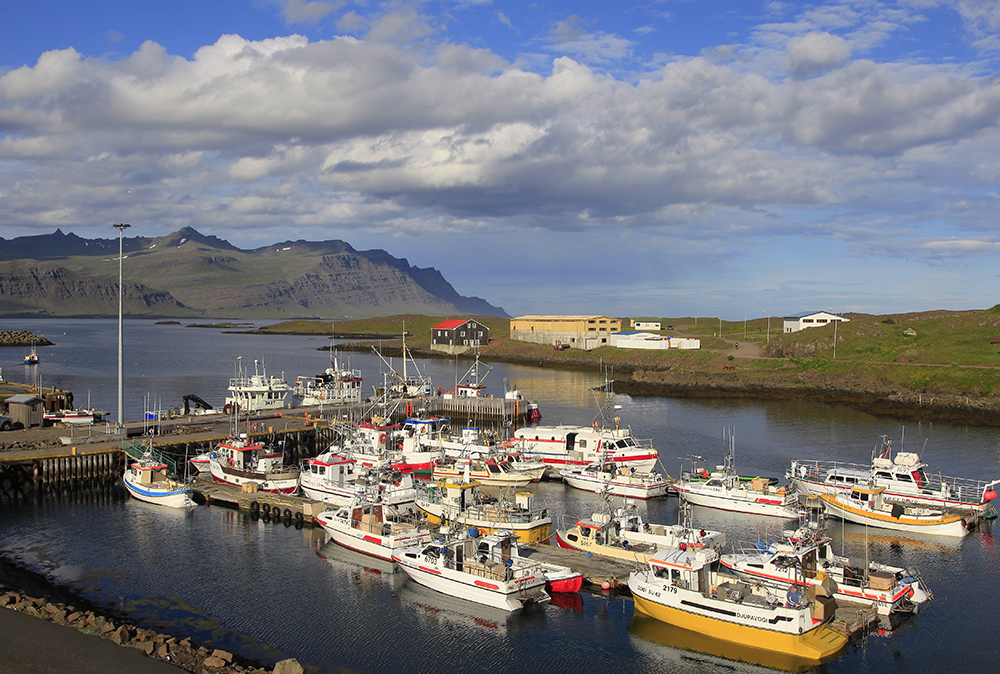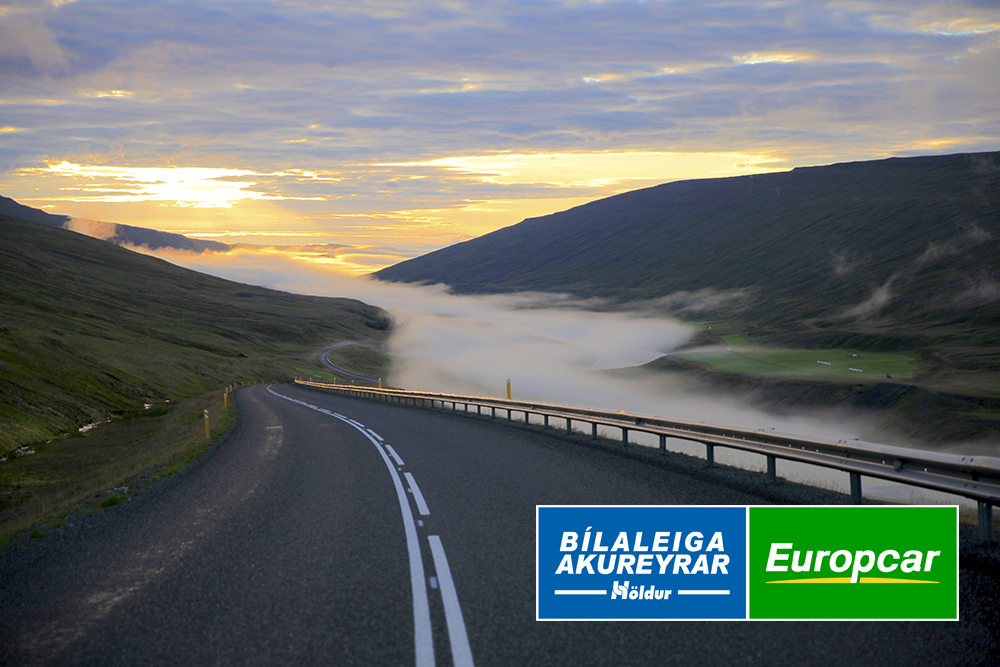- Vehicle Guide
- Driving in Iceland
- Our services
- Locations & Hours
- Travel Inspiration
- South Iceland: A complete guide
- Reynisfjara Beach in Iceland - Your Guide to a Safe Visit
- North Iceland: A Complete Guide for Drivers
- East Iceland A Complete Guide for Drivers
- West Iceland The Complete Driver’s Guide
- Your Ultimate Guide to Exploring Iceland’s Ring Road
- Driving the Diamond Circle in Iceland: Your Ultimate Guide
- Driving Iceland's Golden Circle: Your Ultimate Guide
- A 10-Day Itinerary in Iceland: Tips + Ideas
- The Perfect Itinerary for 7 Days in Iceland
- The Best Time to See the Northern Lights in Iceland with a Rental Car
- Renting a Camper in Iceland: The Complete Guide
- Getting to Iceland: A Comprehensive Guide on How to Reach the Land of Fire and Ice
- Nature Bath Locations in Iceland: A Complete Guide
- Iceland with Kids: A 5-Day Self-Drive Itinerary
- Winter Driving in Iceland: A Comprehensive Overview for Foreign Tourists
- The Total Solar Eclipse in Iceland – August 12, 2026
- Exploring Iceland's National Parks on a Self-Drive Adventure
- Exploring Iceland's Wonders: A Comprehensive Guide to Activities and Car Rentals
- Springtime in Iceland – Your Comprehensive Travel Guide
- Exploring Iceland's Most Popular Highland Routes
- The Pearls of Westfjords: The Ultimate Guide
- Exploring Iceland's Hidden Gems | Off-the-Beaten-Path Adventures
- Driving in Iceland in June: Tips for a Safe and Scenic Summer Road Trip
- Driving in Iceland in July: Tips, Routes & Rentals
- Driving in Iceland in August: Late-Summer Freedom on the Open Road
- Guide to Skaftafell Iceland Self-Drive A Journey Through Fire and Ice
- Eco-Friendly Road Trips in Iceland, Sustainable Travel Tips
- Photographer’s Paradise Top Scenic Drives in Iceland for Stunning Shots
- Iceland's Folklore and Legends A Road Trip Through Mythical Sites
- Iceland’s Midnight Sun and How to Make the Most of 24-Hour Daylight
- Chasing Waterfalls: A Road Trip to Iceland’s Most Spectacular Cascades
- Iceland's Volcanic Wonders: A Self-Drive Tour of Active and Dormant Volcanoes
- Tee Off in the Land of Fire and Ice: A Guide to Golfing in Iceland
- Birdwatching in Iceland: Puffins and Beyond
- Iceland’s Diverse Beaches: Beyond the Black Sands
- Icelandic Horses: The Unique Breed of the North
- Beyond the Ring Road: Iceland’s Hidden Scenic Drives
- Iceland’s Ice Caves: A Year-Round Adventure
- Wildlife Watching in Iceland: Where and When to Go
- Iceland’s Hidden Hot Springs: A Self-Drive Guide to Secret Soaks
- Navigating Iceland’s Weather: What to Expect Each Season
- Tröllaskagi Peninsula: Iceland’s Mountainous Marvel — A Scenic Road Trip with Höldur
- Mastering Iceland's Roundabouts: A Driver’s Guide
- Essential Tips for Renting a Car in Iceland
- Navigating Iceland’s One-Lane Bridges: Your Guide to Safe and Scenic Crossings
- Exploring Iceland’s Film Locations by Rental Car
- 5 Must-Visit Destinations Within Two Hours of Keflavík Airport
- Seasonal Car Rental Tips for Iceland’s Summer Festivals
- Understanding Iceland's F-Roads: How to Drive Safely Into the Highlands
- What Makes Iceland Unique: Top 15 Highlights for an Unforgettable Journey
- Driving and Hiking in Harmony: Explore Iceland's Natural Wonders with Höldur Car Rental
- What is the Best Car to Rent in Iceland?
- Avoiding Common Car Rental Mistakes in Iceland
- Making Your Car Rental in Iceland Child-Friendly: Tips for Stress-Free Family Travel
- Exploring Akureyri, Iceland’s Northern Gem, with EasyJet and Europcar
- Renting a Manual or Automatic Car in Iceland
- Discover the Arctic Coast Way in Iceland with Höldur Car Rental
- How to Save on Fuel Costs During Your Iceland Road Trip
- Electric vs. 4x4 Rentals in Iceland: Which is Right for Your Trip?
- Top Scenic Detours Off Iceland's Ring Road
- Top Safety Tips for First-Time Drivers on Iceland’s Roads
- Cultural Pit Stops Along Iceland’s Ring Road
- Your Guide to Exploring Stuðlagil Canyon by Car: Iceland’s Basalt Beauty Awaits
- Day Trip Ideas From Reykjavik by Rental Car
- Visit Glymur Waterfall: The Ultimate Self-Drive Adventure from Reykjavík
- Discover the Volcanic Wonders of Lake Mývatn by Car
- Discovering the Magic of Snæfellsnes Peninsula by Car
- Your Self‑Drive Guide to Gullfoss Waterfall
- A Guide to Seljalandsfoss Waterfall in Iceland: Explore by Car
- Exploring Reykjanes Peninsula A Self Drive Guide
- Exploring Iceland Landmannalaugar by 4x4
- A Beginner's Guide to River Crossings in Iceland
- Best Car Rental Offers for Iceland’s Summer Adventures
- Your Self‑Drive Guide to Þingvellir National Park
- Your Ultimate Guide to Geysir, Iceland: All You Need to Know
- How to Pay for the Vaðlaheiðargöng Tunnel
- Your Guide to Visiting Jökulsárlón Glacier Lagoon
- The Diamond Beach in Iceland: A Sparkling Wonder Worth Visiting
- Parking fines in Iceland: how to pay and what to do if you receive one
- Where to find overnight parking in Reykjavík: a local’s guide for travellers
- How to park for free in Reykjavík: tips to save on your Iceland trip
- How to pay for parking in Reykjavík - A friendly guide for drivers in Iceland
- Game of Thrones Filming Locations in Iceland: A Self-Drive Guide
- How to Choose the Right Car Rental at Keflavík Airport
- Flying Within Iceland: Your Guide to Domestic Routes and Regional Airports
- Top 3 Must-See Attractions on Iceland's Golden Circle
- Hidden Gems Along the Golden Circle Route
- Your Essential Guide to Iceland: Currency, Culture, and Car Rental Tips
- How to Plan the Perfect Golden Circle Self-Drive Tour
- The Comprehensive Guide to Rental Car Sizes at Keflavik Airport
- Húsafell & Hallmundarhraun: Hidden Lava Field Adventures by Car
- Iceland Weather by Month: What to Expect and How to Drive Safely with Holdur Car Rental
- A Guide to Iceland’s Quirky Roadside Attractions
- Exploring Iceland’s Lava Tubes | Self-Drive Cave Adventures with Höldur Car Rental
- Coolcation in Iceland: Self-Drive Your Summer Escape to the North
- Driving Iceland’s Coastal Roads: A Guide to Lesser-Known Peninsulas
- Top Tips for Driving in Iceland Safely Year-Round
- The Best Rest Stops and Viewpoints Along Iceland's Ring Road
- Driving in Iceland in September: Embrace the Autumn Adventure
- Your Guide to Exploring Fjaðrárgljúfur – South Iceland’s Fairytale Canyon
- Explore Reykholt on a Self-Drive Tour in Iceland
- How to Choose the Right Insurance for Your Iceland Car Rental
- Hiking Múlagljúfur Canyon: Iceland’s Hidden Gem You Can’t Miss
- Understanding Iceland's Weather and How It Affects Driving Conditions
- Dyrhólaey: A Complete Self-Drive Guide to Iceland's Breathtaking South Coast
- Where to See Iceland’s Tectonic Plates Up Close
- Scenic Journey on Kjalvegur Road 35 Reykjavik to Akureyri
- Guide to Visiting Svartifoss with a Rental Car
- Kerið Crater Lake in Iceland: A Self-Drive Guide
- Your Complete Guide to Stokksnes, Iceland with a Rental Car
- Hengifoss Waterfall in Iceland: The Ultimate Self-Drive Guide
- Your Complete Guide to Visiting Skógafoss Waterfall with a Rental Car
- Into the Heart of Þórsmörk: Iceland’s Valley of Thunder
- Dynjandi Waterfall in Iceland: The Ultimate Self-Drive Guide
- Visiting Ásbyrgi Canyon in North Iceland by Car: A Complete Self-Drive Guide
- Driving in Iceland in October: Embrace the Autumn Transition

Iceland Attractions, Travel information
East Iceland: A Complete Guide for Drivers
26.09.2024
Of all the country’s regions, East Iceland is one of the most neglected. But travellers that skip the area are missing out. It’s a dramatic and spectacularly scenic region of quaint villages, deep fjords, and unforgettable natural wonders.
One of the best ways to visit East Iceland is in a rental car. And in this guide, we’ll share everything you need to know about driving in the region. Read on to discover the top sights, essential travel tips, and more.
- Find out more in our guide to driving in Iceland

Why visit East Iceland?
East Iceland—properly known as the Eastern Region or Austurland—is a historic and scenic area. It’s best known for its rugged coastline, as well as its quaint and surprising villages. While it’s an area that many visitors just pass over, there’s a lot that they’re missing.
So, why should you visit East Iceland? Here are three good reasons:
- You’ll encounter fewer visitors than you would elsewhere in Iceland. The Eastern Region is one of the last real off-the-beaten-track destinations in the country. While visitors will drive Iceland’s Route 1—the famous “Ring Road”—via Egilsstaðir, there’s so much more to explore. Head down one of the minor roads to the coast and you’ll find yourself in blissful solitude.
- You’ll discover a fascinating historic region. The east of Iceland faces Europe, and it was one of the places the earliest settlers landed first. For instance, the Viking Naddoður is thought to have first discovered Iceland in the 9th century. He’s believed to have landed near Reyðarfjörður.
It’s not just the Vikings who have contributed to this region’s history. Visit Fáskrúðsfjörður and you’ll discover a village with a notable French influence. It was something of a hub for French sailors in the nineteenth century. - You can explore a beautifully scenic area. The whole of the east coast of Iceland is carved by jagged fjords—known as the Eastfjords. They offer a breathtaking landscape of cliffs and sea views. But they’re not the only scenery to discover here. From Vatnajökull National Park in the south to Stórurð in the north, it’s a surprisingly varied area of the country.
Come and discover East Iceland for yourself. In the next section, we explore some of the region’s top sights in detail.

Top sights and attractions in Iceland’s Eastern Region
Driving in Iceland gives you the freedom and opportunity to discover places and sights that you would pass by in a tour bus. Here are 7 sights and natural wonders that you definitely shouldn’t miss.
1. Delve into Icelandic history at Seyðisfjörður
Seyðisfjörður is a village that sits at the far western point of the fjord of the same name. Surrounded by the snow-capped bulk of mountains, you’ll easily see why the Eastfjords are such a special place.
There’s a lot to do in the village. It’s thought to be one of the oldest settlements in Iceland, as it was settled by a Viking named Bjólfur (who gave his name to the imposing mountain nearby). Today, you can see the village’s history in its wooden houses and the picturesque blue church.
Approach the church by following the Rainbow Street, a road whose paving stones have been painted in the colours of the rainbow. It’s become one of the city’s top attractions for good reason.
Don’t miss the Tvísöngur sound sculpture just outside of town. It’s at the end of a short and scenic hike.
2. Look for monsters at Lagarfljót lake near Egilsstaðir
Egilsstaðir is East Iceland’s main travel hub and the largest town in the region. Located on Route 1, it’s a regular stop for people driving Iceland’s Ring Road.
Aside from the town’s well-developed restaurant and accommodation scene, it’s a beautiful place to explore. It benefits from being in a picturesque location on the banks of Lagarfljót lake. Plus, it’s surrounded by forest, something quite uncommon in Iceland.
Lagarfljót is a fascinating destination for anyone interested in Iceland’s folklore. It’s said that a serpent-like creature lives in the lake, with sightings dating back to the fourteenth century. Take a walk along the banks of the lake and see if you can spot the Lagarfljótsormur or Lagarfljót Worm for yourself.
3. Hike to Hengifoss, the red waterfall
Iceland is packed full of dramatic waterfalls. Yet there are few that are quite as impressive as Hengifoss—not least because it’s the third highest waterfall in Iceland.
Here, torrents of water drop 128 metres (420 feet) over a cliff-face that’s striped with strange natural colours. These red strips of rock are created by layers of sandstone that are present within the basalt.
To reach the waterfall, you’ll need to hike for about an hour, making this a two-hour round trip at minimum. The path is about 2.5km (1.5 mi) in each direction.
We recommend that you stop off at Litlanesfoss, another waterfall nearby. While it’s not as well known as its neighbour, it’s just as impressive, as it’s surrounded by geometric basalt columns.
4. Explore the rugged Eastfjords
The Eastfjords is the name for the entire eastern coast of Iceland. Specifically, it tends to refer to the most captivating part of this coastline, between the villages of Djúpivogur in the south and Borgarfjörður Eystri (sometimes referred to as Bakkagerði) in the north.
It’s no exaggeration to say that this is some of the most stunning coastline in Iceland, where the road undulates between fjords and mountain passes. Get off the beaten track and explore some of the small towns and peninsulas for which the area is known.
One truly jaw-dropping highlight is Borgarfjörður Eystri, one of the widest and most graceful fjords in the area. It’s the perfect place for a hike, or to witness the resident puffin population.
Alternatively, for a taste of tranquil village life, visit the remote hamlet of Mjóifjörður on the fjord of the same name. It’s a wonderfully serene place offering views over the sea.
5. Go on an outdoor adventure in Vatnajökull National Park
Vatnajökull is Iceland’s largest national park, home to the mighty ice cap of the same name. This wild and untouched area divides East Iceland from the south coast and includes some of the most dramatic natural sights you can see anywhere on the planet.
For instance, you can visit Hoffelsjökull, a less-visited part of the larger Vatnajökull ice cap. Due to its fewer visitors, you can enjoy its mighty form in peace. At the bottom of the ice cap, there’s also a glacial lagoon, with icebergs floating on its surface.
Just outside of the Vatnajökull National Park, the mesmerising canyon called Stuðlagil is well worth a visit too. Here, to the west of Egilsstaðir, two cliffs made of basalt columns flank the Jöklá river, which flows down from the Vatnajökull ice cap.
To reach Stuðlagil, you’ll need to hike 4 kilometres (2.5 mi) from the car park on road 923. Or, if you prefer to avoid the walk, visit the observation platform just five minutes from the car park.

6. Walk among the giant boulders of Stórurð
Stórurð is the name of a rugged mountain region in the Eastern Region. Its name translates as “giant boulders”, but that’s only part of what you’ll find here.
Rather, this hidden gem is a surprising oasis of meadows and lakes, strewn with the rocks that give it its name. It lies beneath the jagged peak of Dyrfjöll, with its small and picturesque glacier. During the last ice age, parts of this distinctive mountain were transported by the ice and scattered among these fields.
Park your vehicle at Vatnsskarð on Route 94 and hike for 2.5 hours to reach Stórurð. It’s well worth every step.
7. Unwind at the Vök Baths
Just off Route 1, immediately to the north of Egilsstaðir, you’ll find the Vök Baths. Imagine a constellation of geometric pools floating on the surface of a lake. This spa is an ideal place to relax and indulge after a long drive or a day of sightseeing.
These baths are said to be the only floating infinity pools in Iceland. They’re heated by geothermal energy to varying temperatures for the perfect wellness experience. You’ll find a restaurant and bar on site too, as well as a cold mist tunnel and steam bath. Find out more about nature baths in Iceland in our complete guide

Practical tips for driving in East Iceland
Driving in Iceland may be a little different to what you’re used to back home. With smaller and sometimes unpaved roads, changing weather conditions, and hazards such as wildlife in the road, it’s worth being prepared.
But don’t be put off. East Iceland is well-connected and easy to navigate. And by driving yourself, you can go to places that few other visitors see.
Here’s what you need to know.
1. Know your Icelandic roads
In Iceland, roads come in all shapes and sizes. If you’re renting a vehicle to visit East Iceland, it’s best to hire one that can handle all surfaces:
- Standard paved roads. Roads like Route 1 are much like you’ll be used to at home: paved and well-maintained. Sometimes, particularly at bridges, you may find that they become single-lanes with passing places. If you approach oncoming traffic and a passing place is on your side, please pull over.
- Unpaved roads. Smaller roads and those that lead to private dwellings are often unpaved. Instead, they’re simply gravel. While you can drive a standard passenger car on these roads, if you’re intending to cover longer distances, consider renting a 4x4 SUV.
- F-roads. F-roads specifically refer to remote highland roads. These are carriageways that aren’t cleared of snow throughout the year. So, before driving on them, please check whether they’re open or not. If you’re driving in the highlands at all, you’ll need a 4x4.
- Toll roads and tunnels. In Iceland, there are places where you’ll need to drive through tunnels. In East Iceland, there are three to be aware of, which are typically single lane carriageways with passing places. Find out more here: Tolls and Tunnels in Iceland: A Driver’s Guide
2. Always check for changing conditions
Iceland is well-known for its changeable weather. If you’re driving in Iceland, it’s really important to know what to expect when you’re out and about.
The season you visit will be the biggest factor in your planning. In winter, for instance, Iceland receives large amounts of snow, and roads can be blocked. While most of the main roads (such as Route 1) are regularly cleared, smaller roads are not.
That’s why we always say, please check the conditions of the roads you intend to drive on before you start the engine. You can do this at road.is, the website of the Icelandic Road and Coastal Administration.
While summer has less chance of snow, it’s still important to check your route in advance. Many highland F-roads may not be open until June or even later, for instance.
The weather forecast will be your best friend when you’re travelling in Iceland too. Check it regularly at the Icelandic Met Office.
3. Pack everything you need for the weather and your car rental
If you’re travelling in Iceland by car, you’ll need the following:
- All the documents for your car rental. These include a credit card, valid ID, and a driving licence that you’ve had for at least a year.
- Emergency numbers. In Iceland, the number for the emergency services is 112. It can also be useful to have your rental operator’s emergency number to hand too. If you’re renting with Höldur, that number is +354 840 6000.
- Waterproof layers. You never know what weather you’re going to get in Iceland, even in the summer. Always bring a waterproof jacket and lots of warm layers. It’s best to have it and not need it.
Of course, there are other items you’ll likely want with you for your trip to Iceland, including your camera, a phone, and any chargers.
4. Choose the right vehicle for your individual journey
When hiring a vehicle in Iceland, think carefully about which is right for you:
- 4x4 SUVs. A four-wheel drive will be useful if you’re travelling on unpaved roads or you want a bit of extra control. Plus, SUVs tend to be larger vehicles, giving you more space for yourself and fellow travellers.
- Passenger cars. If you’re travelling on the Ring Road, a passenger car or estate can be a good affordable choice. Be aware though that it won’t be appropriate for trips to the highlands.
- Electric vehicles. For the eco-friendly drivers among us, EVs are the perfect option. Again, they’re not allowed in the highlands, so factor that into your plans.
- Motorhomes. Want to stay the night in your vehicle? Choose a motorhome or camper. With a self-contained living space, it’ll be your home on the road.
Explore our full range of vehicles here.

Frequently asked questions about East Iceland
Here, we try to answer any remaining questions you may have.
How do I get to East Iceland?
There are two main ways that visitors travel to Iceland’s Eastern Region:
- Via the Ring Road. If you arrive in Iceland at Keflavík International Airport, you can hire a vehicle there or in downtown Reykjavík. From the capital, it’s a 450 km (280 mi) drive to Höfn, along the scenic south coast.
- By plane. You can fly from the Reykjavík Domestic Airport directly to Egilsstaðir, the main hub in East Iceland.
What is the best time to visit East Iceland?
You can enjoyably visit East Iceland throughout the year. In summer, it’s mild and drier, while in winter you should expect temperatures around 0°C and regular snowfall.
If you want to see the northern lights, visit East Iceland between late September and early April. Meanwhile, the summer is the best season for outdoor activities, such as hiking.
Can I see the northern lights in East Iceland?
If you visit East Iceland in winter, you’ll have a good chance to see the northern lights. As the region is quite far north and it’s sparsely inhabited, you’ll have good levels of darkness to see the display in all its beauty.
However, glimpsing the northern lights is never guaranteed. You’ll still need clear skies and active solar flares. Find out more in our guide to the best time to see the northern lights in Iceland.
Is East Iceland worth visiting?
East Iceland is one of the most naturally striking and historical regions in the country. While most people pass over the region for more famous sights in North Iceland, there’s lots here for you to enjoy.
If you like gorgeous coastal views, quaint villages, and stunning natural wonders, it’s definitely worth your time.
How many days should I spend in East Iceland?
With so much to see and do in East Iceland, it’s up to you how long you stay here. Many people will spend only a day or two at the main sights around Egilsstaðir. But to delve fully into the Eastfjords, you can benefit from staying a week or more.
What is considered East Iceland?
Austurland, or the Eastern Region, encompasses all of the extreme east of the country, including most of Vatnajökull National Park. If you’re driving east from Reykjavík, you’ll enter the region after the small village of Kálfafell on the south coast. In the north, you’ll leave Austerland when you pass soon after you pass Borgarfjörður Eystri heading west.
What is the largest town in East Iceland?
The largest town in East Iceland is Egilsstaðir. It’s East Iceland’s main travel hub and has a resident population of about 2,500.

Explore East Iceland with Höldur
In East Iceland, deep fjords, historic villages, and natural wonders await. Hire a vehicle and explore this mesmerising region for yourself.
At Höldur, we’re Iceland’s largest car rental operator, with more than 8,000 vehicles in active rotation. We’re also Europcar’s local franchisee.
Visit East Iceland with Höldur. Explore our range to start your adventure today.





